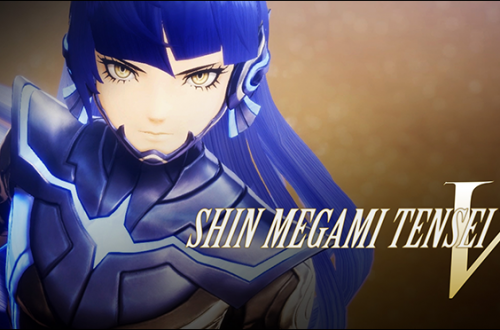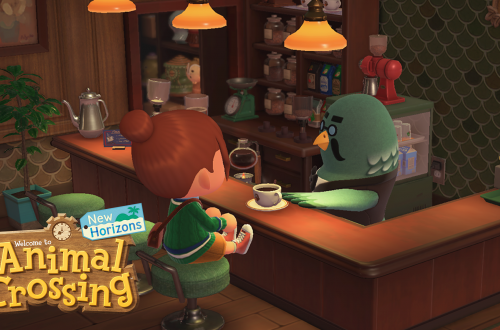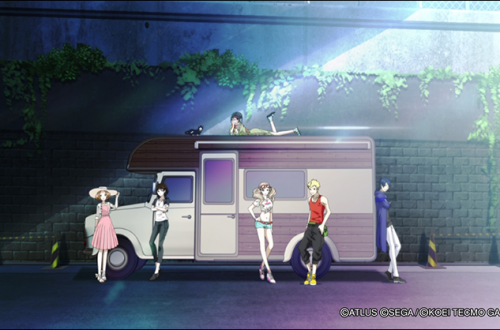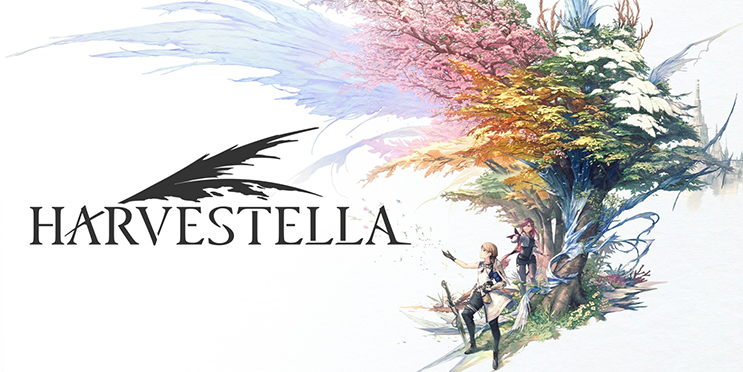
Harvestella Is A Cozy JRPG With Flaws
Harvestella has released just in time for those cozy, autumn farming sim vibes! But did you know that Harvestella is also a JRPG? Square Enix has decided to give a crack at a farming simulator with their own spin on it and the results are a lot more Rune Factory and a lot less Harvest Moon. Harvestella is set in a world where you can choose to cultivate your farm, chat up the locals, beat up some monsters in a dungeon, or choose to advance the story — it’s all up to you! Every 30 days, the seasons change and a new season has started to occur in the interim between the others: Quietus, the season of death, which brings it’s own mysteries. 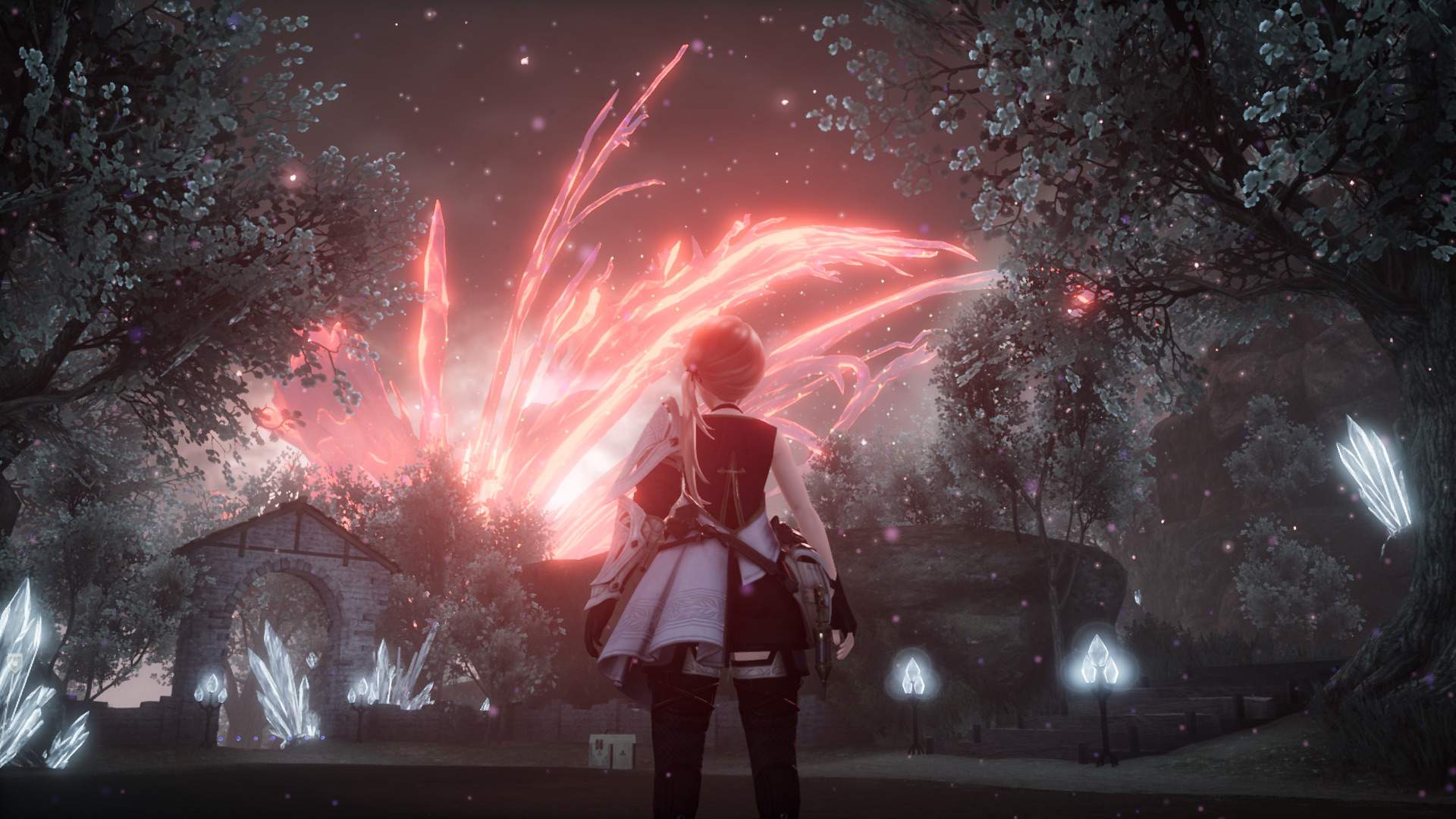
If you’re afraid of spoilers, stop here. ✋? There are potential spoilers in this review.
If I had any advice to give from feedback I’ve seen already, it would be to not compare this too much with farming simulator games you may already be familiar with. This is not a farming simulator like Harvest Moon or Story of Seasons. This is a JRPG first and a farming simulator second. Think of Harvestella as a JRPG which has a strong set of farming minigames, rather than a farming simulator which has a strong dungeon system and story. The main story might feel urgent but you can take your time and explore or advance the story. I never thought I would would describe a JRPG as cozy but here we are.
Prelaunch Updates
Square announced a day one update with the release of Harvestella after listening to feedback from the Nintendo Switch demo version. These updated features include longer days, fishing time has been reduced (hopefully making it more rewarding), you can switch jobs faster in combat, the mage class will attack more quickly in combat now, and there is a new warning effect that will activate when your health drops. There are improvements including partially reduced loading time, modified UI during save and auto-save, and various bug fixes. Despite all these fixes, I continue to experience significant frame tearing issues and visual glitches throughout the game experience even when my Nintendo Switch was docked. I encountered this mostly during combat and when entering new screens. Please keep in mind the graphical issues I discovered were on the Nintendo Switch version of this game. From what I understand, the Windows PC version performs better.
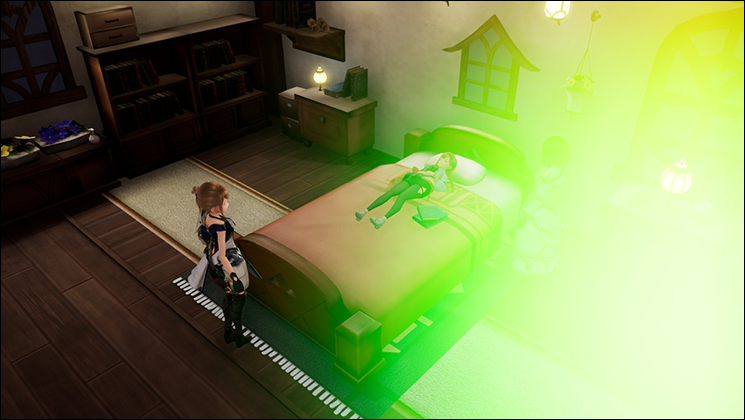
The image above is one example of weird lighting issues in the game. Immediately after chapter two there are a few cutscenes that occur with very peculiar volumetric lighting issues that are obviously an abnormality. There are a few other times in the game where this occurred. Lighting in general seems to be a significant problem for the game, at least on the Nintendo Switch.
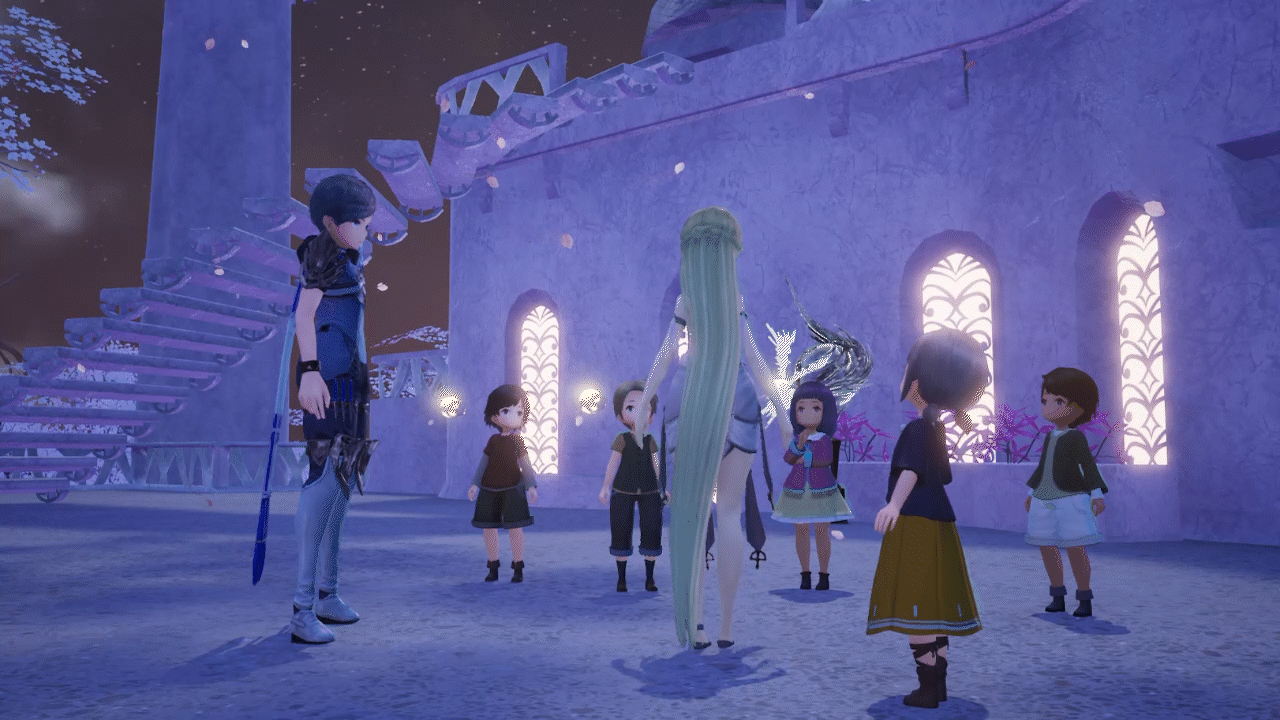
I’ve included a clip taken from the game that shows fuzzy video quality and the character’s hair clipping into the floor. Notice the top of the girl’s hair fades into a pixelated mess as she kneels and the lighting on the crystal element behind the children.
There were also several instances where a character would clip into their surroundings possibly due to lag, and even instances where the video compositing from the game rendering buffer simply didn’t provide a frame block to the graphics pipeline. I managed to catch one example of this, pictured below. Watch the right side of the screen, and note the black square appearing for a few frames along the edge.
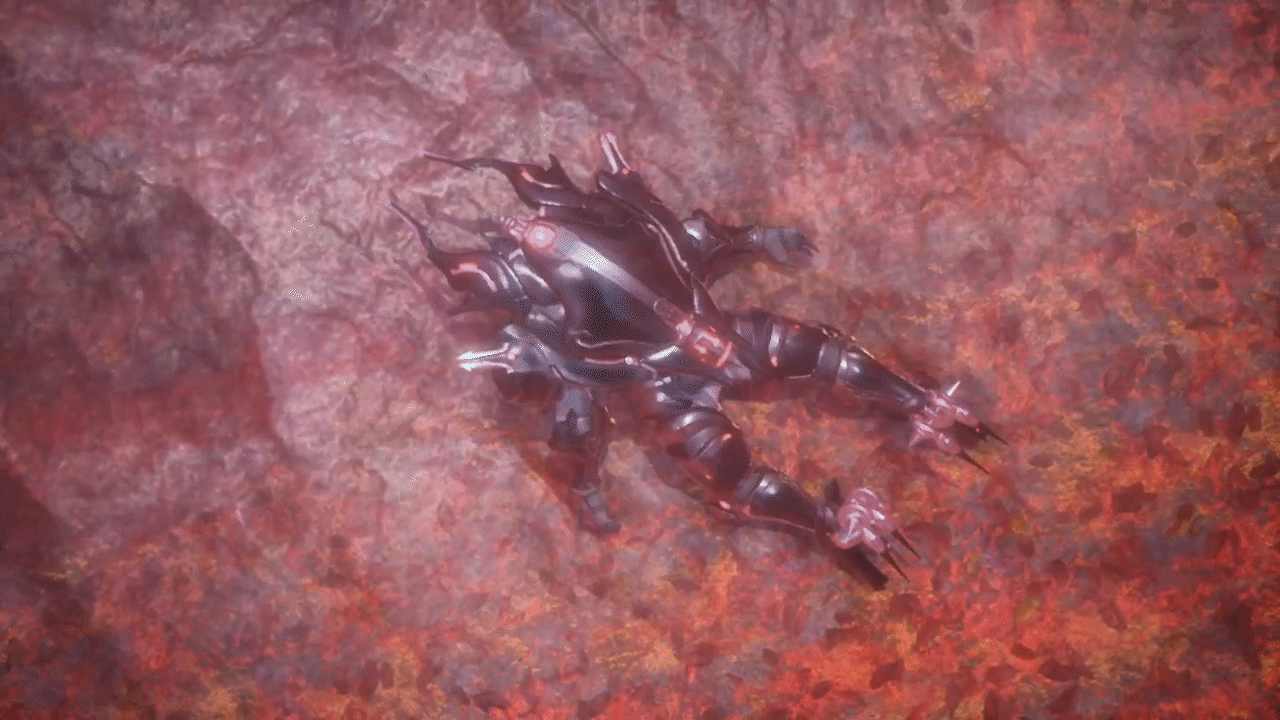
I played on the Nintendo Switch version docked most of the time and I’m not sure if the Windows PC version has the same graphical issues. It’s possible that Harvestella simply bites off a bit more than the Switch can chew in terms of graphics requirements. We’ve seen games do this in the past (Shin Megami Tensai V comes to mind), and it’s a disappointing tradeoff every time it happens. Nintendo Switch Pro when?
Story
At this time, I haven’t played the entire story to the end, but so far it has been enjoyable and I am interested in finishing it. I suspect there could be different endings depending upon which characters you spend time with the most. Immediately after the demo (starting on chapter three), there are three different paths you can choose: visiting the spring, summer, or winter Seaslight. You must complete all paths to progress through the story but the order in which you do them is up to you. Progressing the story wasn’t difficult at all. Harvestella isn’t grindy and it was easy to advance to the next chapter. Sometimes the story felt a little too quick and brushed over.
I found myself wishing the story would slow down a bit and give me time to express my feelings or time to figure out what the heck is going on and who’s who. Sometimes the dialogue and the way things were introduced didn’t make much sense. Harvestella isn’t an open world game, instead it consists of different locations such as Lethe Village, your farm, Njord Steppe, and Jade Forest. You access each of these easily by running from location to location in an overworld map, which you can later traverse more quickly by purchasing mounts. Locations along the world map are often relatively linear, with some twisting paths and hidden treasures dotted along the main route.
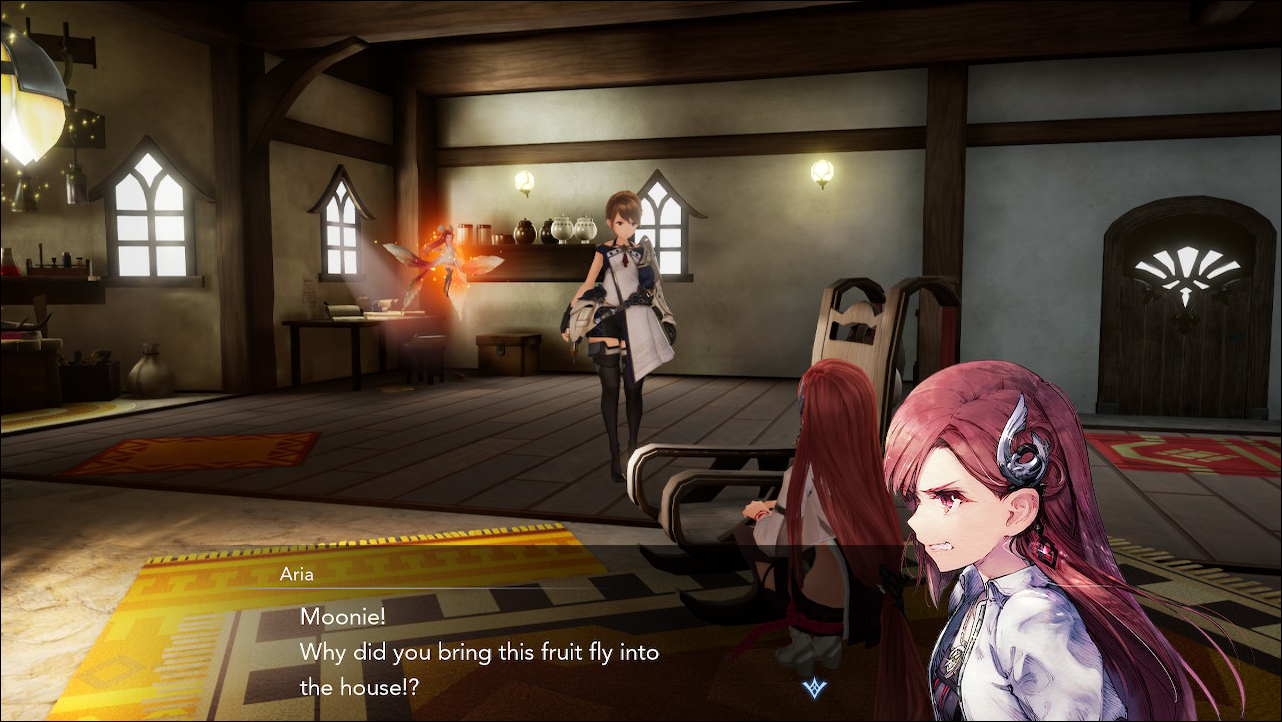
After completing the demo and starting chapter three, you will enter Lethe village and have the option to interact with three new characters. All three of these characters have traveled from neighboring towns with their own respective Seaslight. Keeping up with all of the new characters was pretty difficult and eventually I left the characters I wasn’t as fond of behind (they will always be the same level as the main character so need to grind levels). Some recent JRPGs like Shin Megami Tensei V have a lot of characters but the developers did a great job keeping each character individually appealing, even when the main character was a bit flat.
Harvestella’s characters were severely lacking. The different dialogue options cracked me up at times but they didn’t have depth. Speaking of which, I’m not sure if the dialogue options you choose have any meaningful impact on your relationship with the character. It seems like no matter what option you choose (even the rude dialogue options) it will only positively increase your support level with that character.
Gameplay
Harvestella is a beautiful game with breathtaking scenery, which is to be expected from a Square Enix title. Fresh out of the demo, there are plenty of new characters to meet and recruit, and you get to choose which path you will take on your adventure in discovering the truth of the Seaslight. When creating your character, you can choose between male, female, and non-binary, but it doesn’t really make a lot of difference; the character models are all very similar.
There is quite a bit more voice acting sprinkled throughout the full version of Harvestella relative to the demo (which had none), but it’s still quite sparse. Square Enix usually goes all out with characters in their games and I think that helps a lot with individuality, so maybe that was why some of the characters felt so bland with the lack of an engaging story. I enjoy playing retro games and the lack of voice acting doesn’t bother me per se, but playing a new Square Enix title without it didn’t feel right, coupled with all of the other already mentioned pieces that feel left out (and there’s more, I’m not done).
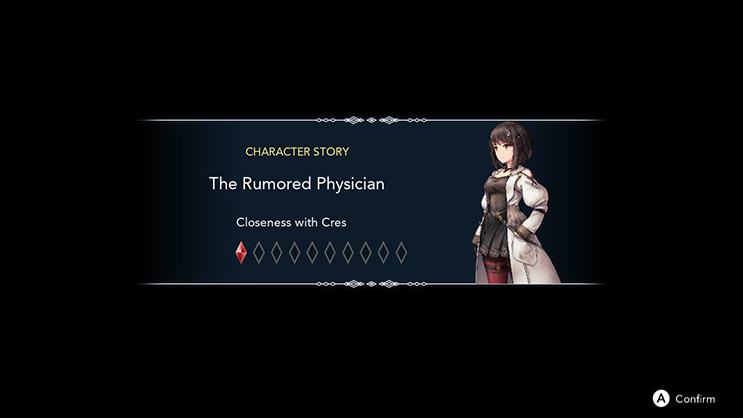
From what I could tell, there are a lot of dialogue options to choose from which is fun, but I’m not sure that it increases or decreases your relationship with other characters. Square Enix has alluded to a character backstory feature in the game that will develop as you progress. If you’re familiar with Harvest Moon, Story of Seasons, or Stardew Valley, you can think of this like your relationship panel. Characters will grow closer to you over time upon completing quests and sharing meals with them. However, unlike the aforementioned titles, there isn’t anything relatively close to special heart events or anything like that. Harvestella isn’t a cozy farming/dating simulator by any stretch of the imagination. There aren’t any special interactions or cutscenes and the characters just… move into your house. But, by growing closer to your companions you will eventually learn special skills for combat, so that’s nice I guess.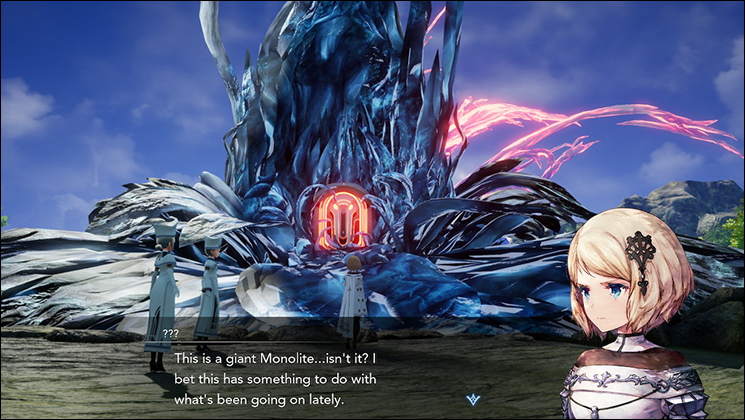
Another important gameplay feature in Harvestella is the passage of time; a mechanic that is present in all farming simulators, but also JRPGs like Persona. Everything takes time — traversing the world map, repairing a bridge in a dungeon, crafting and sleeping — everything. It’s also very important that you make it back home before midnight or you’ll pass out from exhaustion and suffer Cress’s medical bill. This creates a lot of decision points during gameplay, where you need to actively choose how to spend your time. You will commonly use the Motus Monolite to warp your way around different destinations but you can only use this device to warp back to your home (at first). It still takes time to travel to your destination on the world map.
Traveling further away from home made getting back into my bed at midnight drastically more complicated when I could not find a Motus Monolite or return bell to get back home. I can see how this could stress players out but I enjoyed this system.
Farming
Don’t let the title fool you, this is not Harvest Moon or Story of Seasons, and there really isn’t a lot of farm-related stuff to do. Crops grow incredibly quickly in this game and it just doesn’t feel as rewarding or challenging like you’ll find in other farming simulator titles. The days of calculating space for crops, planning out seed growth and maturity before the end of each season, and crop value, did not feel necessary given the short time it takes for crops to grow.
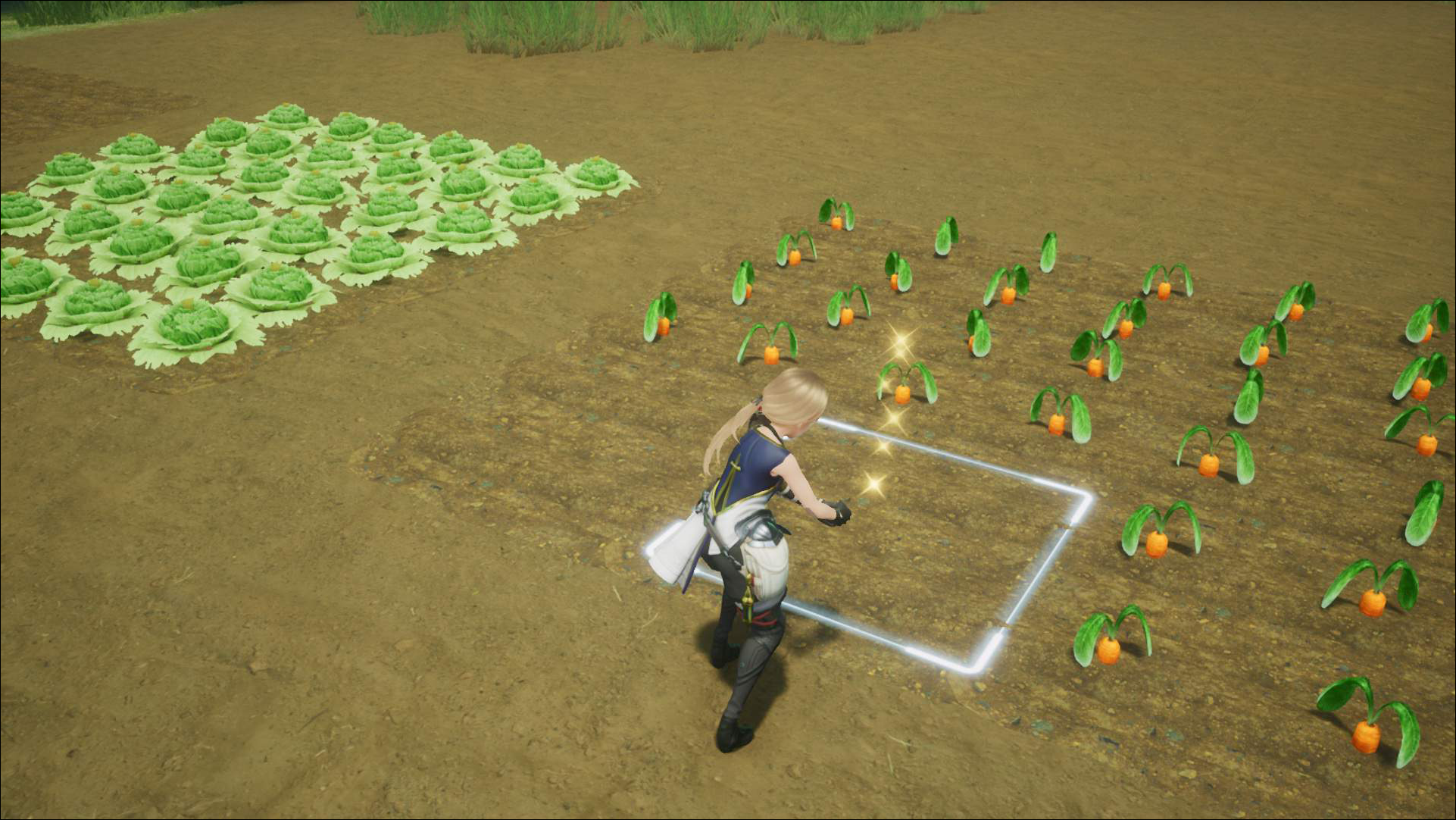
Personally, I really enjoy that aspect of farming simulators, but you won’t find yourself toiling over the soil too much in Harvestella. A lot of the crops grow too quickly to fuss about scheduling. For example, the spring Carrop crop grows in one calendar day and it yields a 115g profit value while the seeds cost 105g. There are a few seeds that will take four calendar days to grow but most will continue producing crops every two to four days.
There aren’t any farming tools to upgrade either although eventually you can learn a “charge up” ability with your tools that allowed you to till, say, three squares instead of just one. You start out with a watering can, a hoe to till the ground, and later you can craft a hammer. There isn’t a sickle so will pull wheat right out of the ground with your bare hands. However, you will eventually learn a charge ability with your farm tools to do things like plow wider areas with your hoe or smash a larger boulder in your crop field. There are animals — Cluffowl and Woolums — that you can build pens for and they will produce wool and eggs for cooking. You cannot go into the animal pens though, they are strictly decorative. But overall, farming and animal husbandry feels secondary to the combat. Like I mentioned above, this is a JRPG with farming minigames, rather than a farming simulator with dungeons.
There’s emphasis placed upon growing your own crops (especially early in the game) to make recipes for yourself which are then used to restore health, stamina in dungeons, and complete quests, but to be clear, it wasn’t necessary. You can play the game entirely without it even though there will be a few turn-in quests and things that you will miss. Especially when the items you gather in dungeons and quest rewards will profit enough of an income to purchase health recovery items from the shops. Early on in the game, I did use my crops for recipes that could restore my health rather than selling the crops for profit, but eventually it was no longer necessary. It wasn’t balanced very well.
In addition to farming, there is a basic crafting system which you can access once you unlock the crafting table. You must first unlock crafting recipes through quests and other means but there are a lot of crafting recipes to uncover. Eventually, you will unlock the means to craft processors for your farm. Processors will turn basic materials and produce into processed goods. You can place these processors in your crop fields. Literally right in the middle of your crop fields in a crop tile. It’s a very ugly placement system but I guess it gets the job done.
Combat
In the Harvestella demo, combat was choppy (dare I say, limited) and I fumbled with all of the different control configurations and shortcuts quite a lot. It did not get better upon the full release of the game. The day one patch fixed a few bugs with combat in Harvestella but combat still feels choppy and slow. There are different combat classes to switch between, a skill tree with unique abilities for each one, but not a whole lot of mixing and matching for that “perfect strategy” well-suited for a specific monster. The companions you bring along with you will always be the same level as the player character and if a companion dies, they’ll just randomly respawn with full health in a minute or so. There isn’t a combat difficult option in Harvestella, but if there was, it would be “very easy” mode.
Honestly, I found myself using the fighter class a lot and just hacking everything to pieces because it was quicker and easier than standing around as a mage. Farming simulators can get away with clunky and shallow combat systems because they’re farming simulators. Harvestella explicitly prioritizes the RPG elements, meaning that it should be judged as an RPG. You wouldn’t give a pass to a Final Fantasy title with a terrible combat system and you should judge Harvestella in that same light.
There isn’t a dodge ability in the game either (at least not from what I’ve found), so if you’re a mage, good luck running around the map avoiding the enemies attacks and trying to get a spell casted quickly enough. Instead, you have to bait enemies away from each other where you can fight them one on one. I appreciated the challenge (I always do!) but not being able to dodge at all felt cheap. Especially when the monsters hit really hard and there’s no way I could force my allies to take the blows instead of my squishy mage. The mage class does eventually learn a spell that knocks nearby enemies back but it does not learn a dodge ability. Notably, you can dash in battle, but it’s not the same. The dash animation is very slow and very short. More than likely, you’re still going to get whacked.
Each individual class comes with its own job tree with new abilities to learn. Some abilities are passive while others are active. Job Points (JP) can be gained by defeating enemies and can be used to unlock new abilities. JP cannot be spent on other jobs. Meaning, JP accrued on the Fighter class will not also be accrued on your Mage class. I actually appreciated this a lot because it forced me to use a different class when I eventually maxed out on fighter. Also, enemies have strengths and weakness and playing off of an enemies weakness made fights easier. Some enemies are weak to magic, etc., so switching up your party composition was fun to strategize. Some characters you bring along will not be effective against certain enemies so it’s important to strategize your team composition before setting out on an adventure.
The Good: Harvestella is a strikingly beautiful JRPG with great music to boot. Plus, the story was intriguing enough to keep me interested in continuing. The additional paths I could choose in the main story was a fun adventure to experience, too. I enjoyed strategizing my days and mapping out daily plans and routes. It was also very fun to plan out crop harvest at the end of each season before the Quietus came through and rooted up all of my vegetables. The different characters were interesting enough even though the dialogue options and events with them felt stifled at times.
Overall, I liked the idea of Harvestella. It was a great way to pass the time and I definitely think that others could enjoy the game for what it is. I know I have been so far.
The Bad: I thought having JRPG and farming simulator elements coexist in one game was a great new spin and I’m glad Square Enix was brave enough to take this leap, but I don’t think the balance between the two was enough. I was always left starving for both. Harvestella tried to accomplish too many things at once and didn’t deliver fully on any one of them. All of the elements are there but it just isn’t polished.
On the Nintendo Switch version of this game, there were a lot of graphical issues, including weird lighting at random times, frame tearing, characters clipping oddly into their surroundings and other odd issues that weren’t addressed on the day one launch update. For a $60 (USD) title, I expected a lot more.
Everything in the game poked at what I had been hoping for but it didn’t feel complete. There was always something that felt missing.
Conclusion: I’d love to try this game again on the Windows PC version to avoid the graphical issues but maybe that’s just normal to expect in games nowadays. Experiencing this new combat system was fun and meeting new characters in a new story was okay but nothing to write home about. I cannot justify the $60 price tag, but if you’ve got it lying around, Harvestella is worth checking out.
Be sure to check out more of my game reviews here and follow me on Twitter to get notifications on my published articles!
Image Credits: Square Enix

